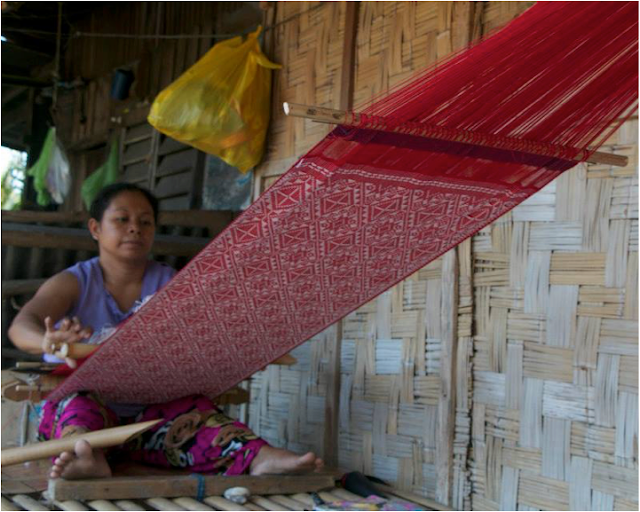Yakan Face Masks - The Resourcefulness and Resiliency of the Yakan Weavers of Zamboanga City
The Yakan community in Barangay Upper Calarian, Zamboanga City left Basilan due to armed conflict in the late 1960s to the early 1970s. From 1974 to 1975, while still dependent on relief goods, they started reviving their traditional weaving at the evacuation centers. Using their backstrap loom, they produced tennun (handwoven cloth), which are carefully crafted with different geometric patterns, highlighted with vibrant colors of cotton threads. They turned the tennun into tourists goods, such as table runners, wall decors, coasters, placemats, wallets and bags, as a source of income.
Eventually several community weaving centers developed, featuring women and their children weaving and conducting free demonstrations for visitors. Weavers, who are mostly women, teach their children how to weave from the age of seven when they are not in school.
They learned the craft after having been accustomed to observing their mothers weave every day or even playing around the loom. Through practice and memory, one generation to another transmits processes, techniques and designs in weaving.
Greatly affected by the onset of the COVID-19 pandemic, the Yakan weavers lost income as they were dependent on sales of textiles to local and foreign tourists visiting their village. They had to temporarily close their stores due to travel restrictions after the implementation of the Enhanced Community Quarantine (ECQ) in March 2020.
In response to the crisis, Ms. Louie Lobregat of Linea Etnika encouraged them to weave and sew face masks from gathering available textiles so that they could continue their livelihood during the pandemic. In addition, they set up social media accounts to reach out to families, friends, as well as patrons and inform them about their new product.
Through word of mouth, the news about the tennun face masks in bunga sama (floral designs), sinalu’an (striped diamonds), and geometric designs spread, reaching Luzon and Visayas. From April to September 2020, they wove textiles, sewing them into face masks. Eventually, the weavers produced an average of 100 to 180 face masks per month.
According to Ms. Maika Muzarin, one of the weavers, even if they had a hard time coping with the pandemic, they are extremely grateful to the people who continued to patronize their weaves, be they transformed into face masks, table runners, or headcloths. Through their art, they were able to sustain their families’ needs in these trying times.
_____________
Text and Photos by NMP GAD, and Ethnology Division
© National Museum of the Philippines 2021





No comments:
Got Something to Say? Thoughts? Additional Information?